|
ID |
Nickname |
Country / City |
Languages |
Taxonomies |
Comment |
Project / Group |
Map |
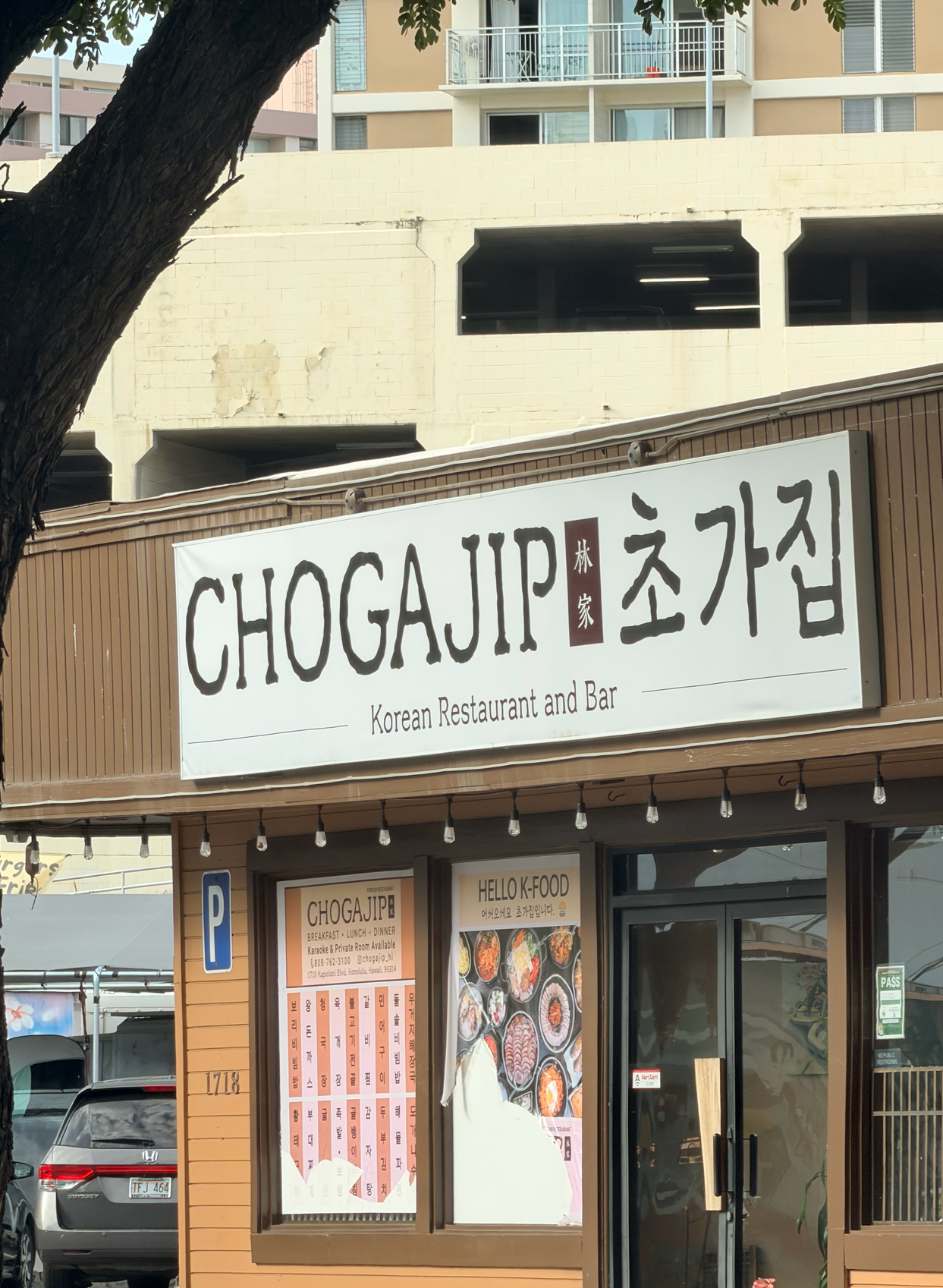
|
147939
|
catherine
|
United States
Honolulu
|
|
|
While I was driving on Kapiolani Blvd, getting ready to turn onto Atkinson, I noticed this Korean restaurant, Chogajip, with its name written in English and “초가집” written next to it. After searching up what this means, I found that it says “thatched house,” which refers to a traditional Korean home. I found this interesting because it’s not only multicultural, but it’s also something only someone proficient in Korean would understand. The only English on the sign is “Korean Restaurant and Bar,” while the Korean wording conveys a homelike taste and environment. Seeing this bilingual signage sending different messages to different audiences shows how openly multicultural Hawaiʻi is.
|
Multilingual Hawaiʻi
|
|
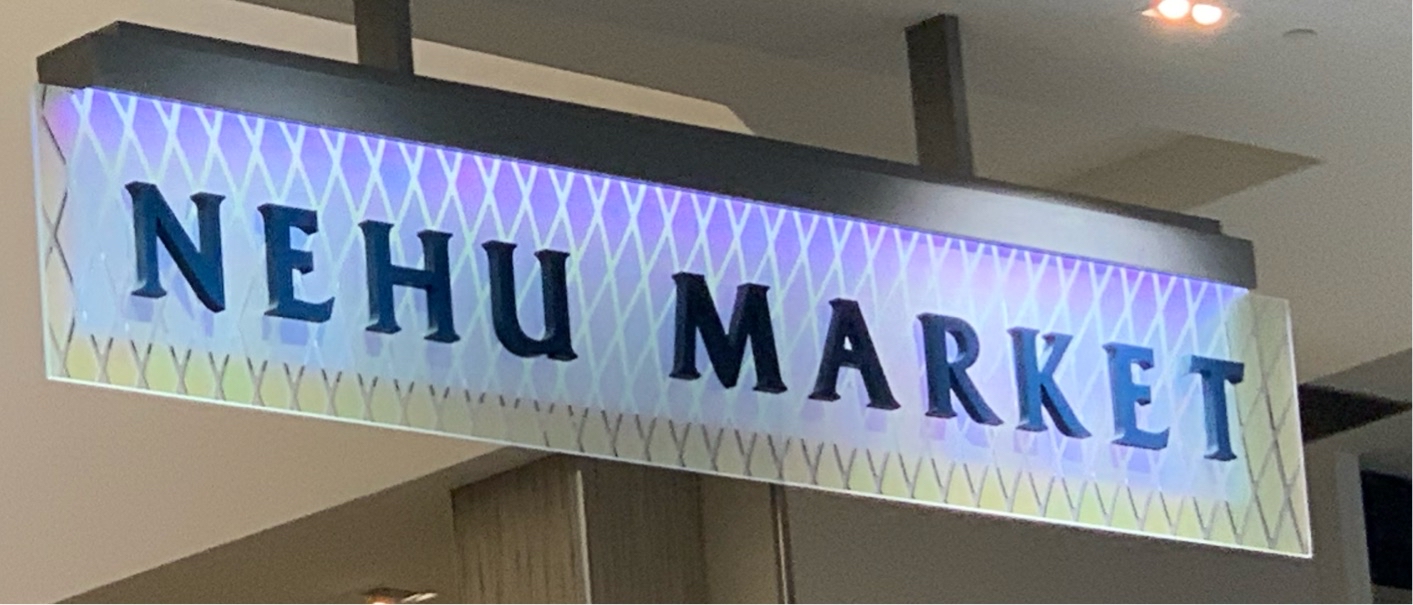
|
44003
|
|
United States
Aiea
|
|
|
This is an example of Hawaiian. It’s a sign of metal made letters so it’s a permanent placement. It means small anchovy which fits for the small food court at the top of Pearl ridge downtown side. It’s probably just good decoration and metaphor for the area appealing to both locals and tourists.
NIP
|
Multilingual Hawaiʻi
|
|

|
47075
|
|
United States
Honolulu
|
|
|
(SK) (#3) This sign is located on campus in the Life Sciences building. The Hawaiian word for woman is exhibited on the sign which is “Wahine.” Hawaiian is found here because it again is used in an attempt to familiarize/normalize the language on campus. Anyone would be able to know what the sign means without knowing the language because of context and already knowing that that symbol means woman. The intended audience of this is anyone looking to use the bathrooms.
|
Multilingual Hawaiʻi
|
|
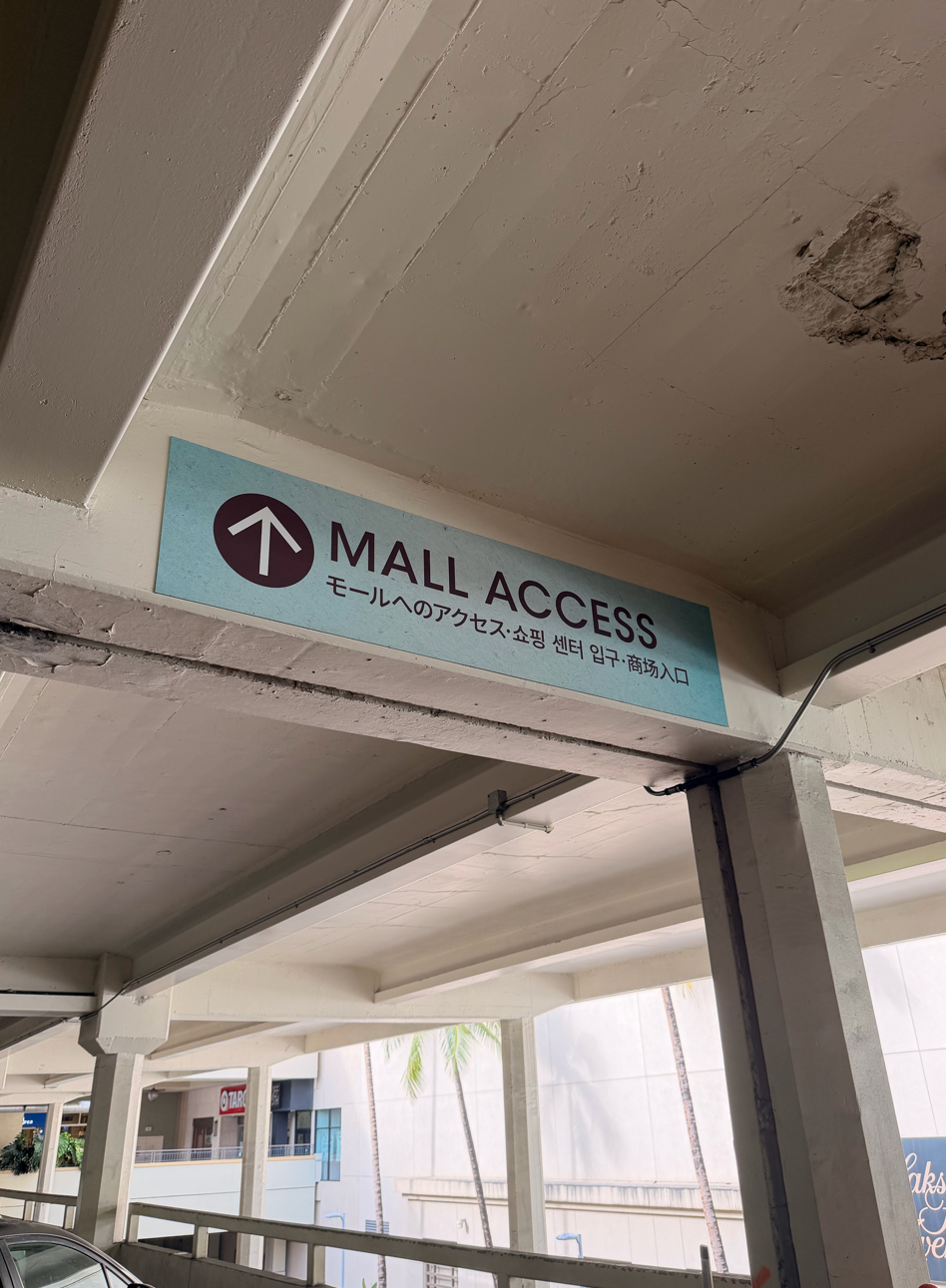
|
147940
|
catherine
|
United States
Honolulu
|
|
|
While I was driving through the Ala Moana parking lot on the main level next to Target, it was the first time I noticed this “Mall Access” sign, even though I’ve driven past it many times. It caught my attention because the sign is in English, Japanese, Korean, and Chinese. Since this sign is in an older wing of the mall, it’s probably been here for many years without me noticing, which shows how long Hawai‘i has been a multicultural environment. Although Ala Moana is a touristy place, it was still interesting to see such a general sign in four languages. The Japanese, Korean, and Chinese all translate to “Mall Access.” Seeing multiple languages layered into a simple directional sign made me realize how deeply multilingualism is built into Hawai‘i’s public spaces, even in areas we overlook.
|
Multilingual Hawaiʻi
|
|
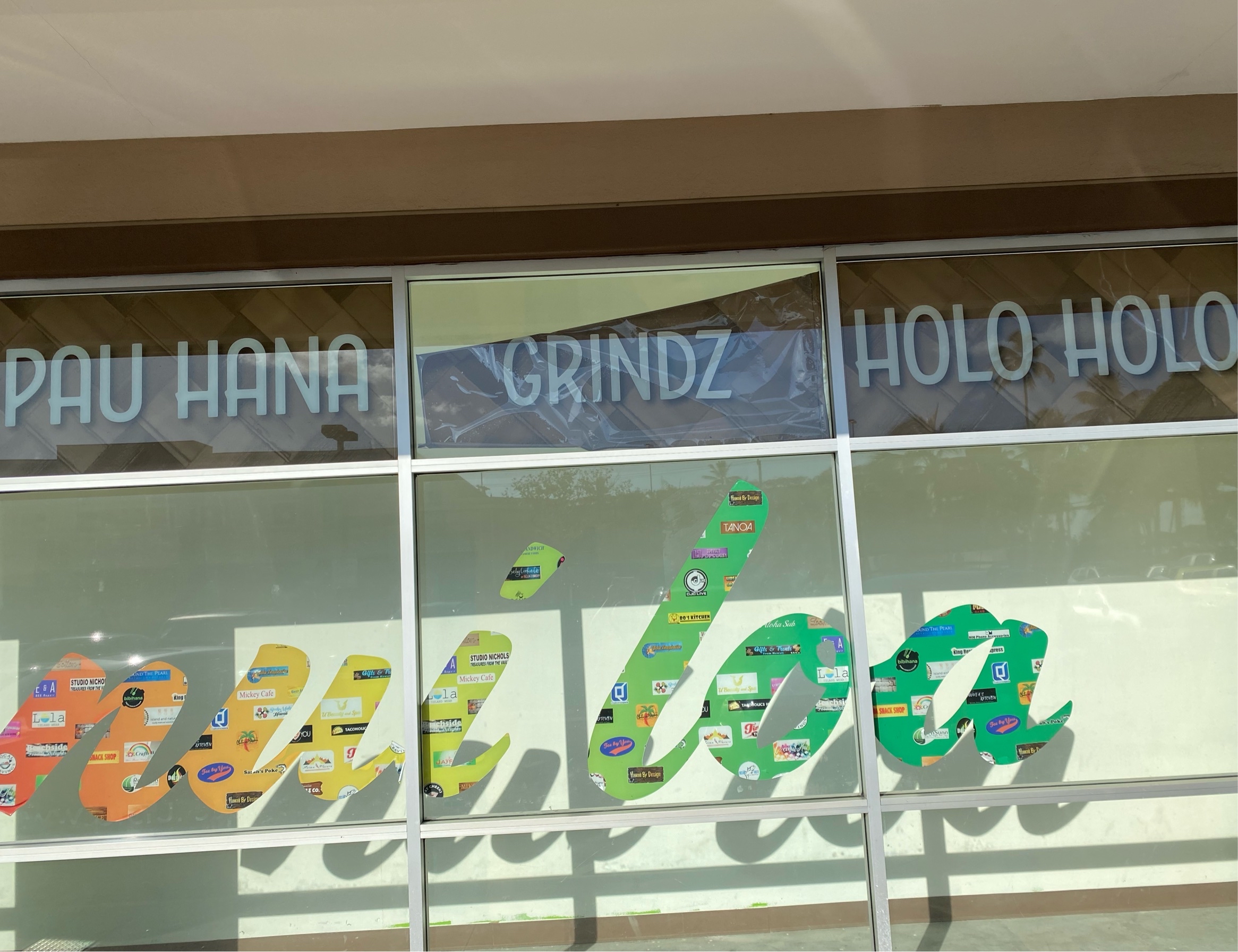
|
38372
|
|
United States
Honolulu
|
|
|
—
|
Multilingual Hawaiʻi
|
|
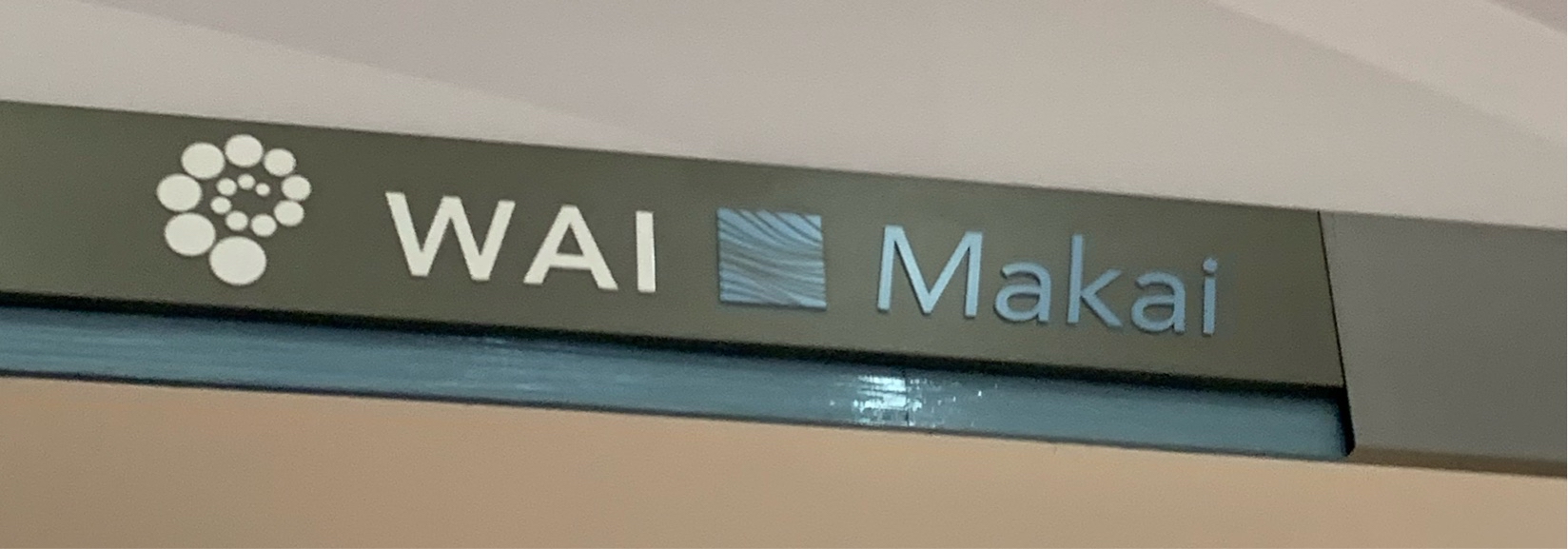
|
44004
|
|
United States
Aiea
|
|
|
This is an example of Hawaiian. It’s a metal sign so it’s a more permanent fixture. Wai means water, makai means towards the ocean, that’s why the sign is blue with a wave picture. It appeals to both tourists and locals for direction and learning.
NIP
|
Multilingual Hawaiʻi
|
|
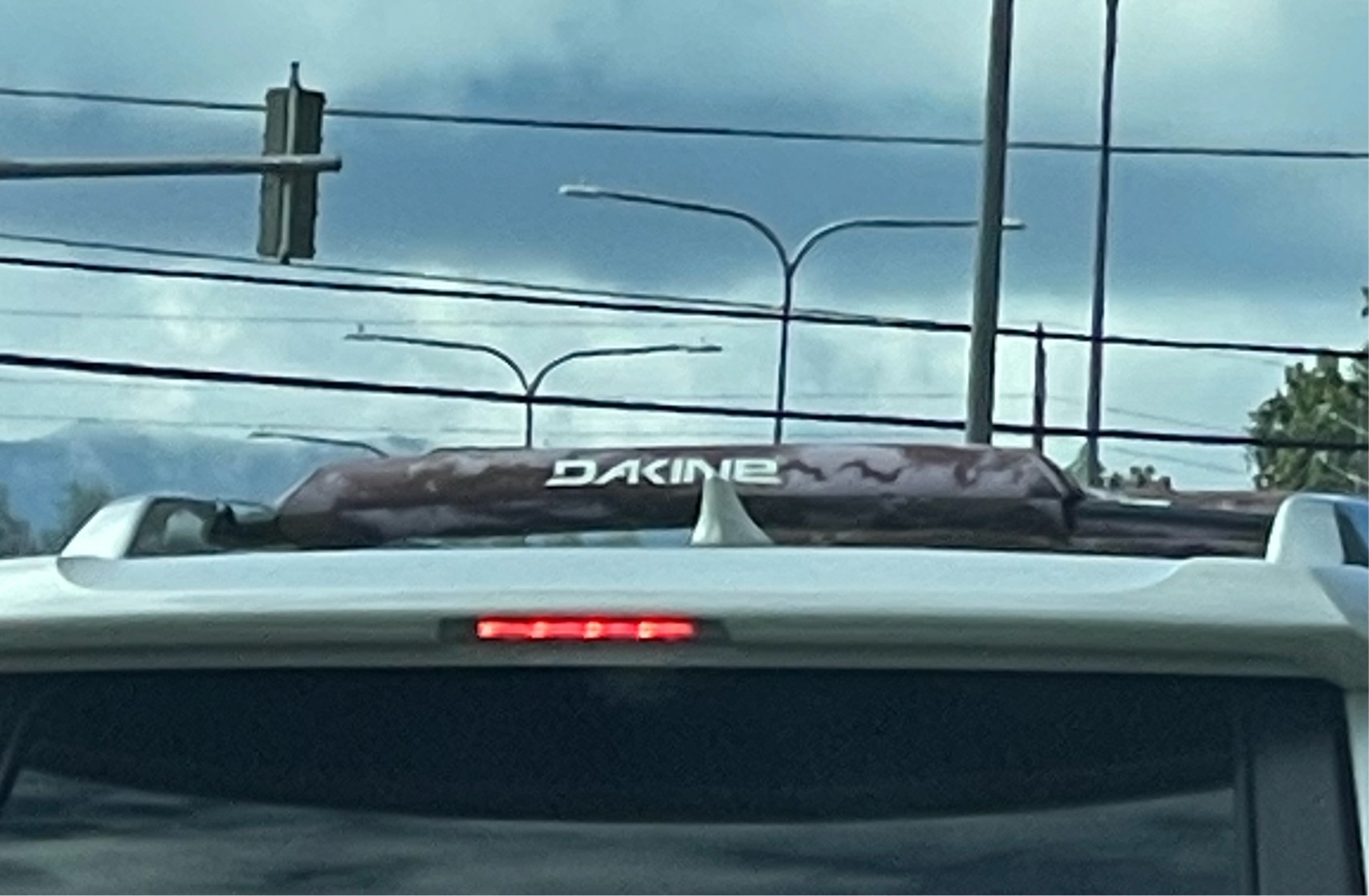
|
46052
|
|
United States
Kaneohe
|
|
|
SU: Check Up #2
- What language is used on the sign?:
The language that is used on the sign is Hawai’i Creole or Pidgin.
- How is the language presented?:
The language is presented in all capital, white letters.
- Who is the audience?:
The audience is the general public but it is more commonly known by locals.
- What is the domain?:
The domain is on the top of a car in public.
- What is the sign telling people?:
The sign is the name of a clothing brand that is commonly known in Hawai’i.
- Why is Pidgin being used here?:
Pidgin is being used here because it is appropriate since we live on an island that consists of people who speak Pidgin and it could also be that they’re showing that they’re proud to be a local.
|
Multilingual Hawaiʻi
|
|

|
47076
|
|
United States
Honolulu
|
|
|
(SK) (#3) This sign is found in the freshman towers located on campus. The point of this sign is to educate the students/residents of the tower and begin to immerse them in the language of Hawaiian. It does this by giving the translation of the word in standard English and then also adding the Hawaiian translation. In this case, the word “red” in Hawaiian is “‘ ‘ula’ula” according to the sign.
|
Multilingual Hawaiʻi
|
|
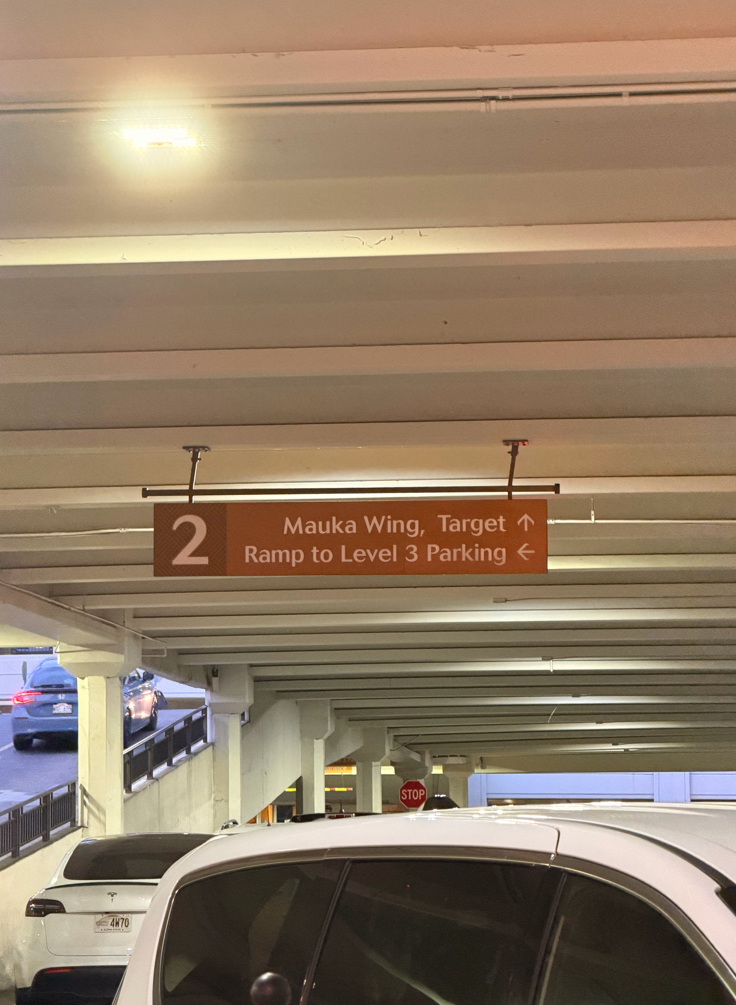
|
147941
|
catherine
|
United States
Honolulu
|
|
|
I took this photo on the main level of Ala Moana, right across from the Lanaʻi Food Court. The sign says “Mauka Wing,” which means “toward the mountains” in Hawaiian. I found it interesting how the mall uses Hawaiian words very frequently in its directional signs. Even the food court itself is named “Lānaʻi,” which is another island here. Seeing Hawaiian used in everyday signage and throughout such a large institution shows an effort to incorporate the language, even if it can sometimes feel a bit inauthentic. Still, noticing Hawaiian in these directional signs made me realize again how multicultural and multilingual Hawaiʻi is.
|
Multilingual Hawaiʻi
|
|
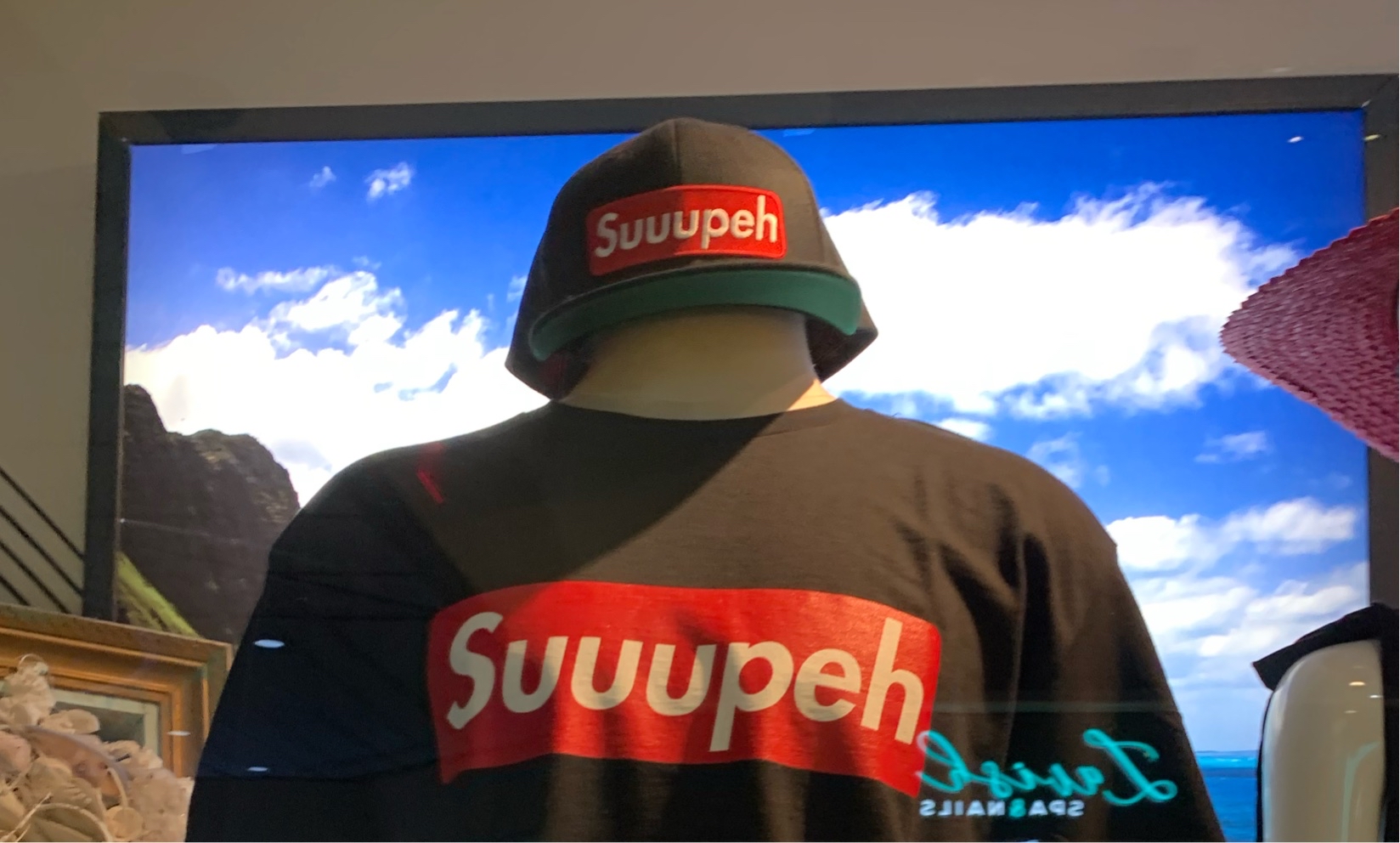
|
44005
|
|
United States
Aiea
|
|
|
This is an example of pidgin. Suupeh being the “kiai”/shout of local fighters. This is a print on a shirt so it’s more of an item to sell This is a more appealing item for locals who have heard a lot of fights in school.
NIP
|
Multilingual Hawaiʻi
|
|
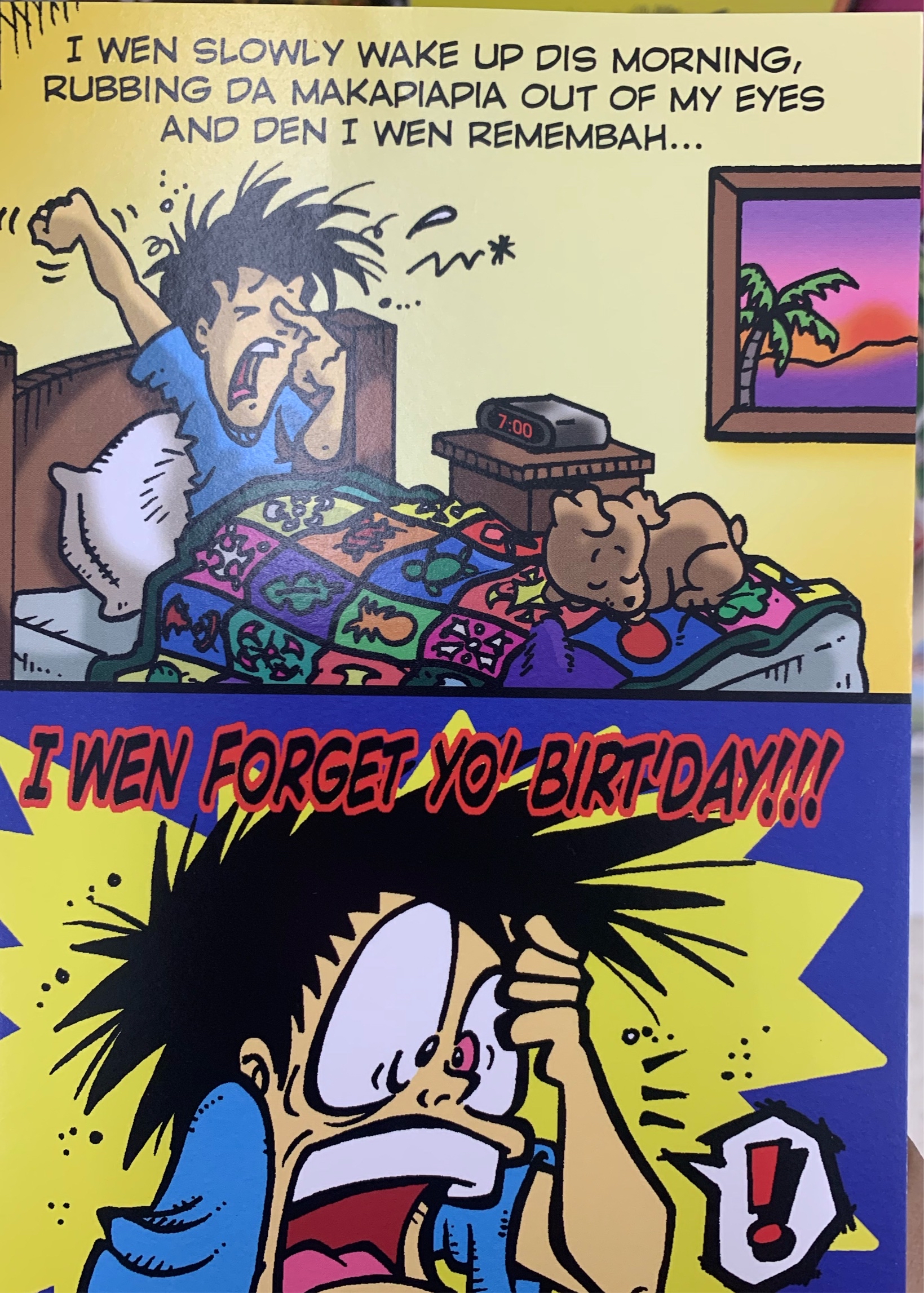
|
46053
|
|
United States
Kaneohe
|
|
|
SU: Check Up #2
- What languages are used on the sign?:
The languages that are used on the sign is Hawai’i Creole or Pidgin, Hawaiian and English.
- How is the language presented?:
The languages are presented in small, skinny, black letters but also in big, bold, black and red letters.
- Who is the audience?:
The audience is the general public, but would probably be more directed towards locals.
- What is the domain?:
The domain is on a birthday card in a public store.
- What is the sign telling people?:
It is telling people that this boy was slowly waking up this morning, rubbing the makapiapia (mucous of the eye) out of his eyes and then he remembered that he forgot this person’s birthday.
- Why is Pidgin and Hawaiian being used here?:
Pidgin and Hawaiian are being used here because it is an entertaining way to write a birthday card. It is appropriate to give someone who knows and is exposed to the language of Pidgin.
|
Multilingual Hawaiʻi
|
|

|
47077
|
|
United States
Honolulu
|
|
|
(SK) (#3) This photo is located in the freshman towers on campus. It exhibits the word for birds in Hawaiian which is “iwa.” The point of this photo is to educate the students/residents of the tower and begin to immerse them in the language of Hawaiian. These birds are cut out and found on one side of the walls in the entrance
|
Multilingual Hawaiʻi
|
|
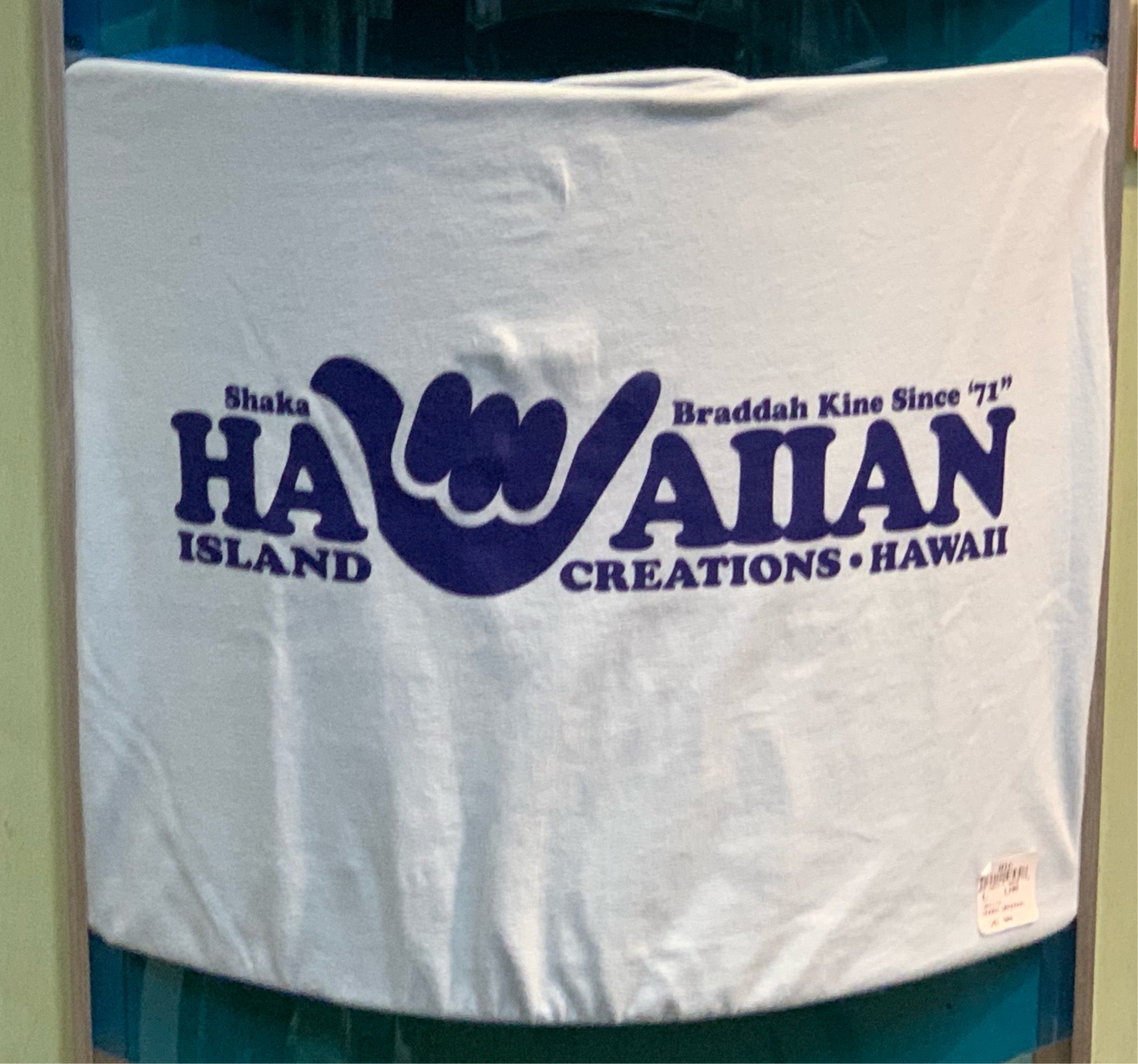
|
44006
|
|
United States
Aiea
|
|
|
This is an example of pidgin. Shaka being a local hand sign for greetings and Braddah kine being a term for being laid back and friendly with others almost like family. It’s a print on a shirt so it’s a sellable item. It’s appealing more towards locals but has tourist appeal because of the kind of message it has.
NIP
|
Multilingual Hawaiʻi
|
|
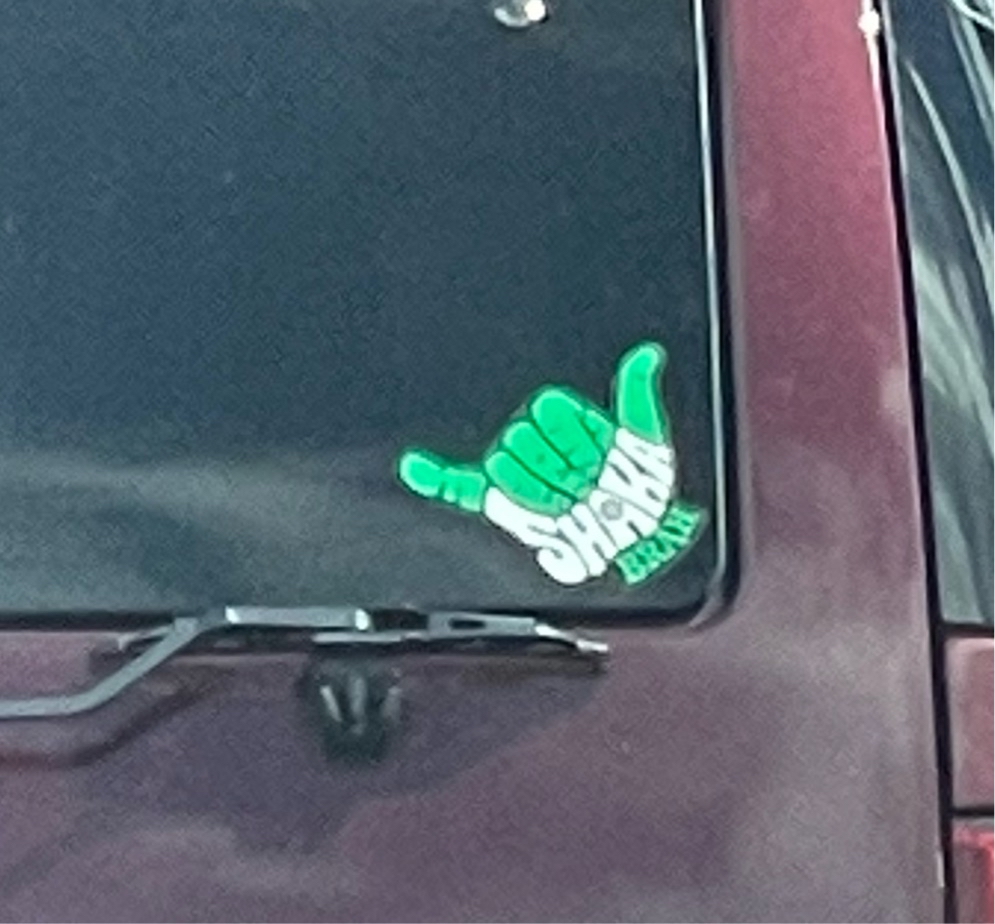
|
46054
|
|
United States
Kaneohe
|
|
|
SU: Check Up #2
- What language is used on the sign?:
The language that is used on the sign is Hawai’i Creole or Pidgin.
- How is the language presented?:
The language is presented in big and small font in the colors green and white.
- Who is the audience?:
The audience is the general public as it could be directed towards the locals and non-locals.
- What is the domain?:
The domain is on the back of a car used as a bumper sticker.
- What is the sign telling people?:
The sign is telling people hello and see you later as the shaka is a greeting. This is kind of the equivalent of “Shoots, brah”.
- Why is Pidgin being used here?:
Pidgin is being used here because it is appropriate in the island of Hawai’i and all of the locals know what this means so a lot of people can relate to it.
|
Multilingual Hawaiʻi
|
|

|
47078
|
|
United States
Honolulu
|
|
|
(SK) (#3) This poster is also found in the freshman towers located on campus. The point of the poster is to educate the students/residents of the Center for Hawaiian Studies by incorporating Hawaiian and giving definitions to Hawaiian phrases. The poster is also trying to influence students to think about the possibility of studying in Hawaiian Studies. The target audience is specifically freshman students who are interested in finding out more about this program
|
Multilingual Hawaiʻi
|
|

|
47334
|
|
United States
Honolulu
|
|
|
The domain is novelties. The Pidgin is used as a birthday card to greet people. The intended audience is locals who want to give this card to another local, whose birthday it is. It is printed on card stock. The implied message is “it’s your birthday again, I see. It’s the day you receive plenty aloha and generosity.” This is a simple and direct translation of the phrase above. - CQ EC
|
Multilingual Hawaiʻi
|
|
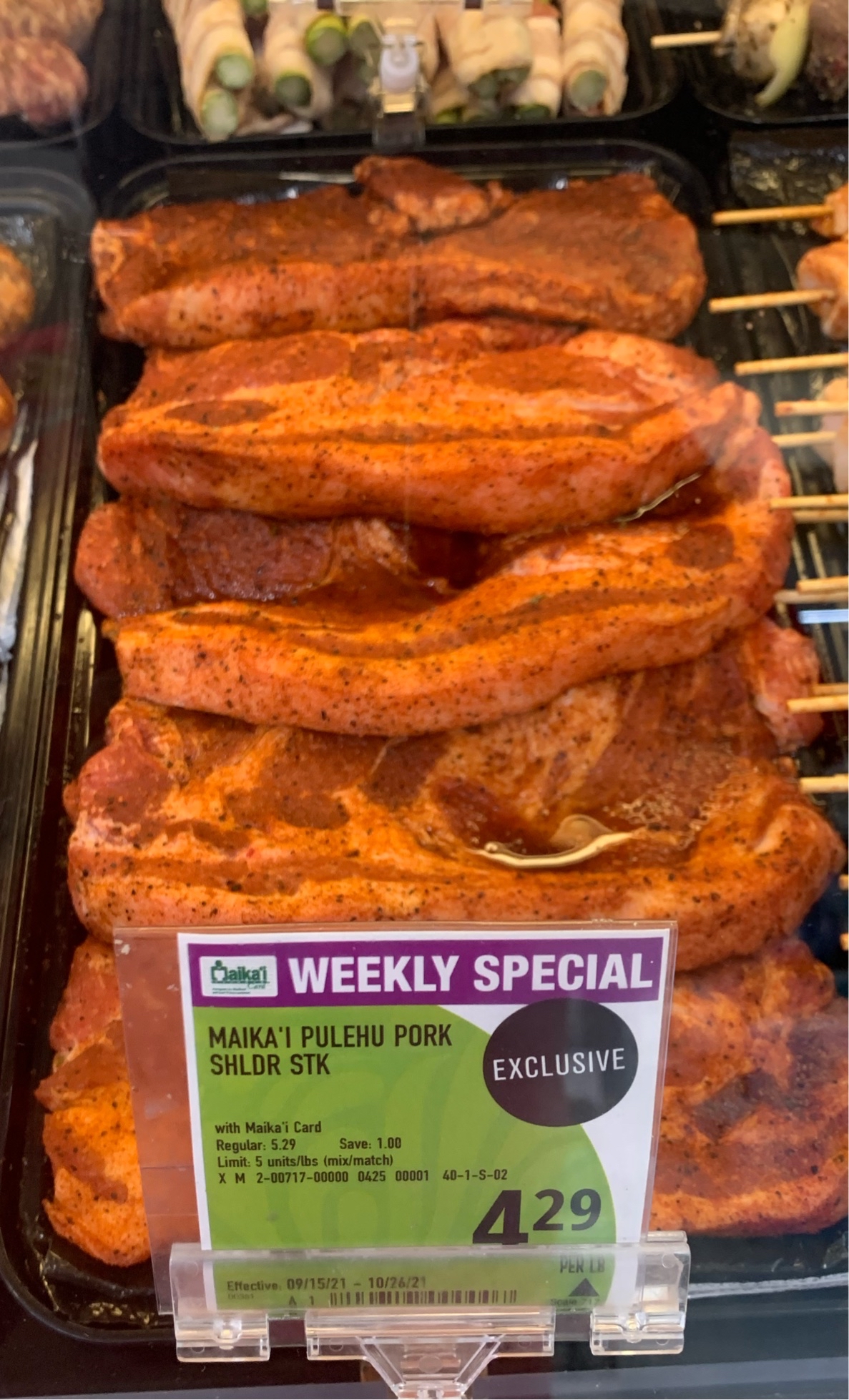
|
44007
|
|
United States
Honolulu
|
|
|
This is an example of Hawaiian. Maika’i denoting good, and pulehu being a cooking technique in Hawaiian meaning cooked over hot coals. This is a “specials” sign printed on a paper so it’s not permanent. It appeals for both locals and tourists to be “authentic” and good.
NIP
|
Multilingual Hawaiʻi
|
|
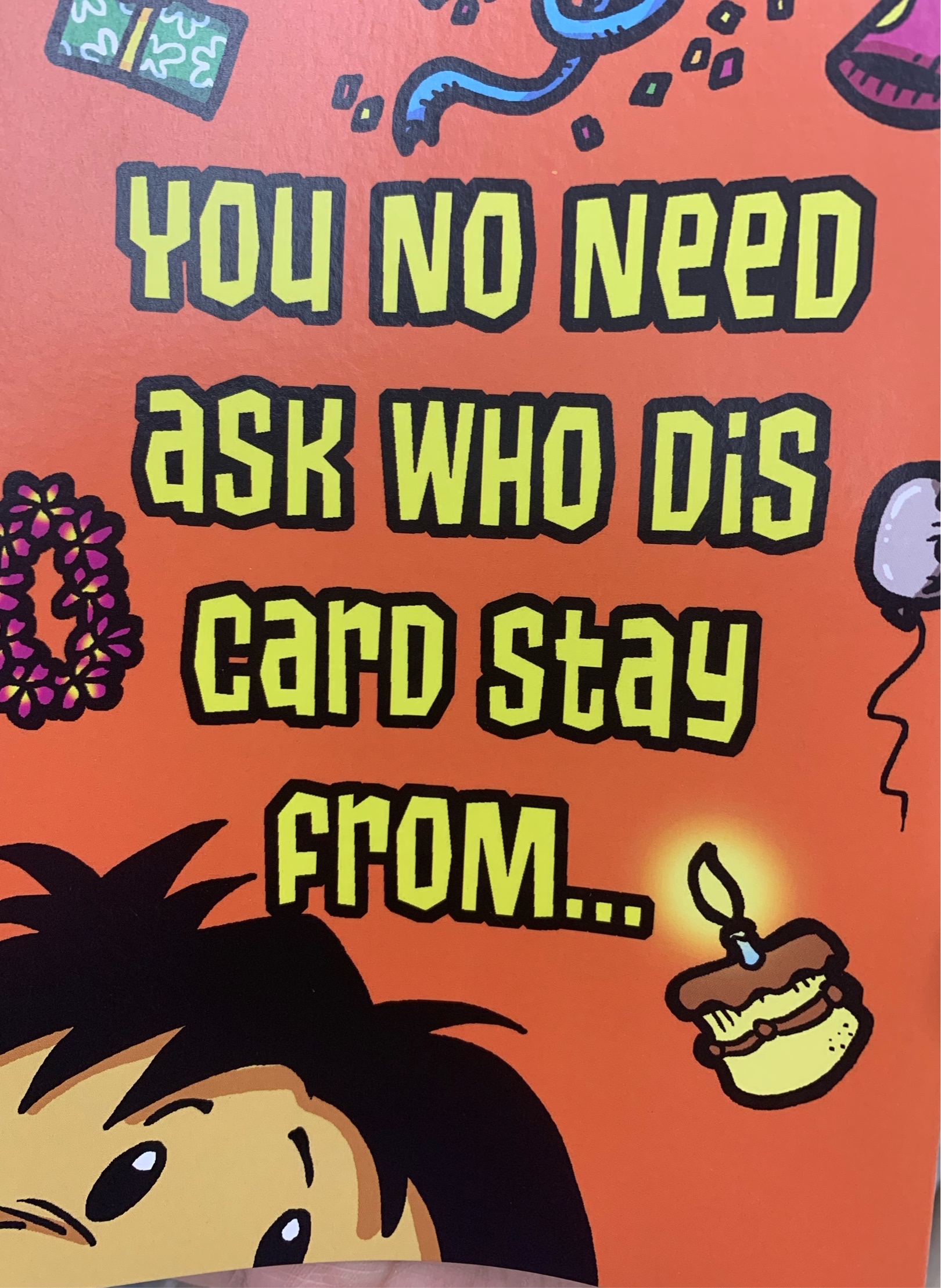
|
46055
|
|
United States
Kaneohe
|
|
|
SU: Check Up #2
- What languages are used on the sign?:
The languages that are used on the sign is Hawai’i Creole or Pidgin and English.
- How are the languages presented?:
The languages are presented in big, bolded, yellow and black letters.
- Who is the audience?:
The audience is the general public, but would probably be more directed to the locals.
- What is the domain?:
The domain is on a birthday card in a public store.
- What is the sign telling people?:
The sign is telling people that whoever is receiving this card should already know who is giving it to them.
- Why is Pidgin being used here?:
Posing is being used here because it is a unique way to write a birthday card and it is something especially unique to the people of Hawai’i. It is appropriate to give someone who knows and is exposed to the language of Pidgin.
|
Multilingual Hawaiʻi
|
|
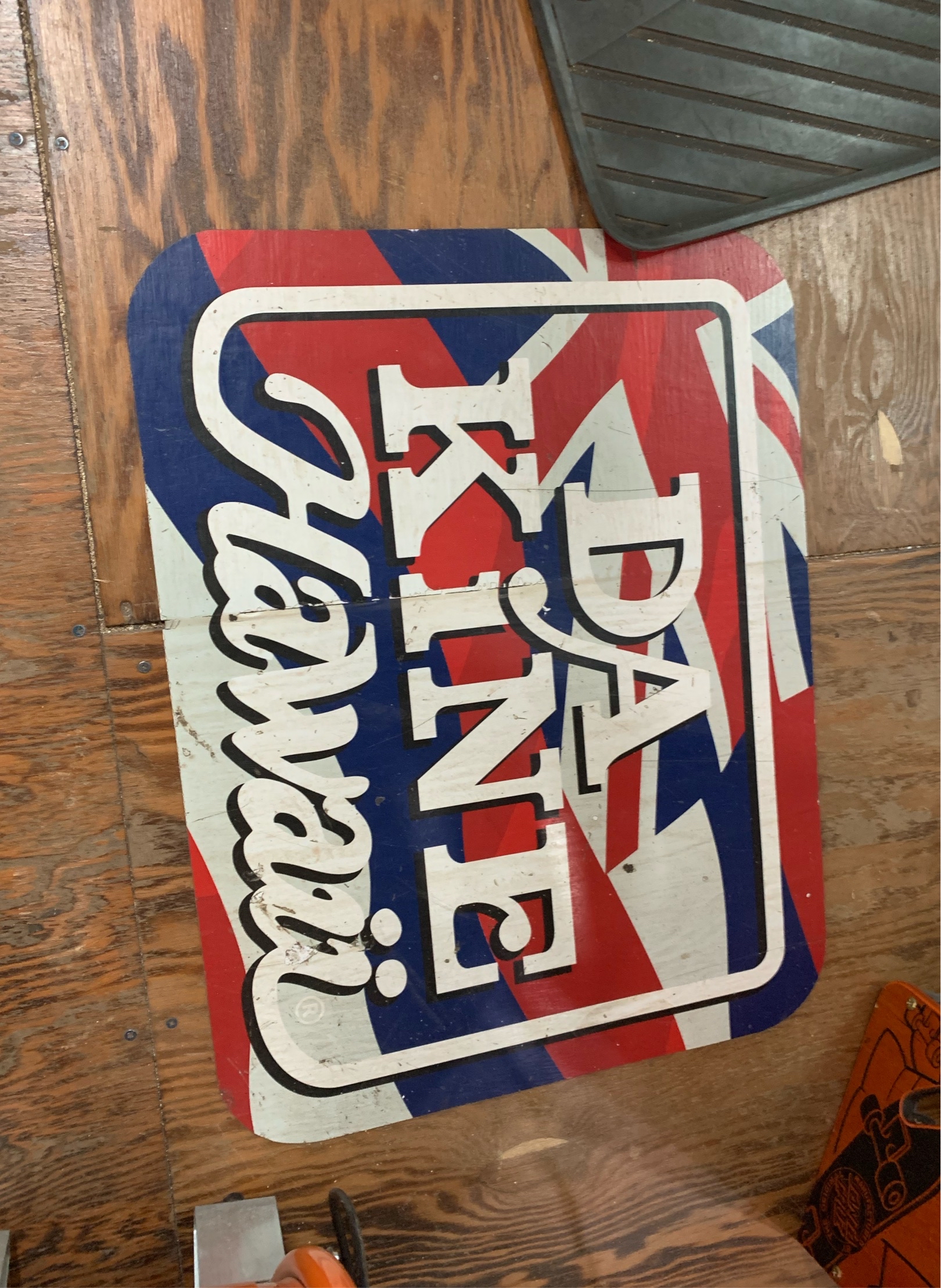
|
47079
|
|
United States
Haleiwa
|
|
|
(SK) (#3) This photo is located in the North Shore of Oahu, specifically in Haleiwa. This is a floor mat found in a local surf shop with the Hawaiian flag in the background with the Pidgin phrase “DaKine.” The use of Pidgin on this floor mat is just as decoration and in a way familiarizing/normalizing Pidgin. The target audience is anyone who steps into the surf shop and looks around.
|
Multilingual Hawaiʻi
|
|

|
44008
|
|
United States
Aiea
|
|
|
KA. this is someone's license plate. they probably thought it was cool
|
Multilingual Hawaiʻi
|
|